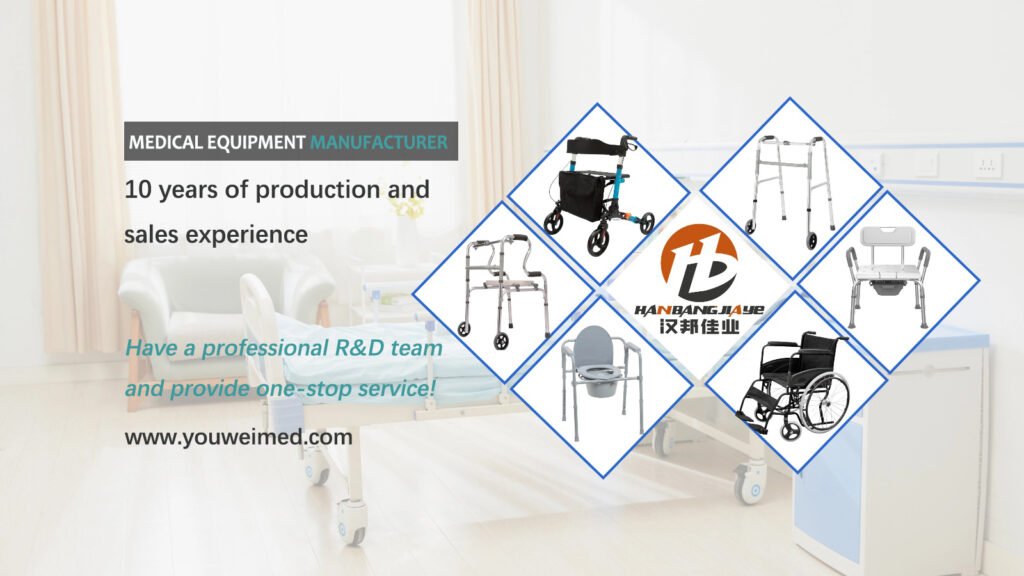In today’s aging society and growing healthcare landscape, walking aids have emerged as vital tools to enhance mobility and restore independence for individuals with mobility challenges. These devices, ranging from basic canes to advanced rollators, play a significant role in improving quality of life while offering safety, stability, and confidence to users. For industry distributors and wholesalers, understanding the nuances of walking aids is essential for meeting market demand effectively.

Market Insights and Trends
The global walking aids market is projected to grow steadily, driven by aging populations, increased prevalence of disabilities, and advancements in assistive technology. According to recent market research, North America and Europe hold a significant share of the market due to their robust healthcare infrastructure and higher awareness of mobility solutions. Meanwhile, emerging economies in Asia-Pacific are witnessing rapid growth due to improving healthcare access and rising disposable incomes.
Key trends shaping the market include:
- Lightweight Materials: Modern walking aids are increasingly crafted from lightweight yet durable materials like aluminum and carbon fiber, enhancing user comfort and portability.
- Customizable Features: Adjustable heights, ergonomic grips, and foldable designs cater to diverse user needs, boosting adoption rates.
- Smart Technology Integration: Devices with integrated sensors, fall detection, and GPS tracking are gaining popularity, especially among tech-savvy users and caregivers.
Types of Walking Aids
Walking aids are designed to meet varying levels of support needs. Key categories include:
- Canes:
- Ideal for individuals with minor balance or stability issues.
- Available in various styles, including single-tip canes, quad canes, and folding canes.
- Ergonomic handles and anti-slip tips enhance safety and comfort.
- Crutches:
- Provide support for individuals recovering from injuries or surgeries.
- Options include underarm crutches and forearm crutches.
- Lightweight designs reduce strain on users.
- Walkers:
- Offer maximum stability for individuals with significant mobility limitations.
- Variants include standard walkers, two-wheeled walkers, and rollators with built-in seats.
- Features like hand brakes, storage compartments, and shock-absorbing wheels are in high demand.
- Rollators:
- Advanced mobility aids equipped with four wheels, hand brakes, and seating options.
- Ideal for outdoor use and longer distances, offering a balance between support and independence.
Considerations for Distributors and Wholesalers
For industry stakeholders, catering to this diverse market requires strategic planning and a keen understanding of customer needs. Here are critical factors to consider:
- Product Range: Stock a wide variety of walking aids to address different mobility challenges. Offering multiple brands and price points can attract a broader customer base.
- Quality Assurance: Ensure products meet stringent safety standards and certifications, such as FDA approval or ISO certifications. Highlighting these features can build trust with buyers.
- Customization Options: Customers value products that align with their specific needs. Adjustable designs and aesthetic customizations, such as color options, are increasingly popular.
- Education and Support: Equip your sales team with comprehensive product knowledge to guide customers effectively. Providing training on assembly, maintenance, and usage can set your business apart.
- Logistics and Availability: Maintain a robust supply chain to ensure timely delivery and stock availability. Partnering with reliable manufacturers is critical to meet fluctuating demand.
The Road Ahead: Embracing Innovation
As technology continues to evolve, the walking aids market is poised for significant transformation. Smart walking aids, incorporating features like real-time monitoring, data analysis, and remote connectivity, are likely to redefine the industry. Distributors and wholesalers who stay ahead of these innovations will be better positioned to capture emerging opportunities.
Conclusion
Walking aids are more than mobility tools; they are enablers of independence and dignity. For distributors and wholesalers, investing in high-quality, innovative products and fostering strong relationships with manufacturers can drive long-term success. By staying attuned to market trends and user needs, you can play a pivotal role in empowering individuals to lead more active and fulfilling lives.

